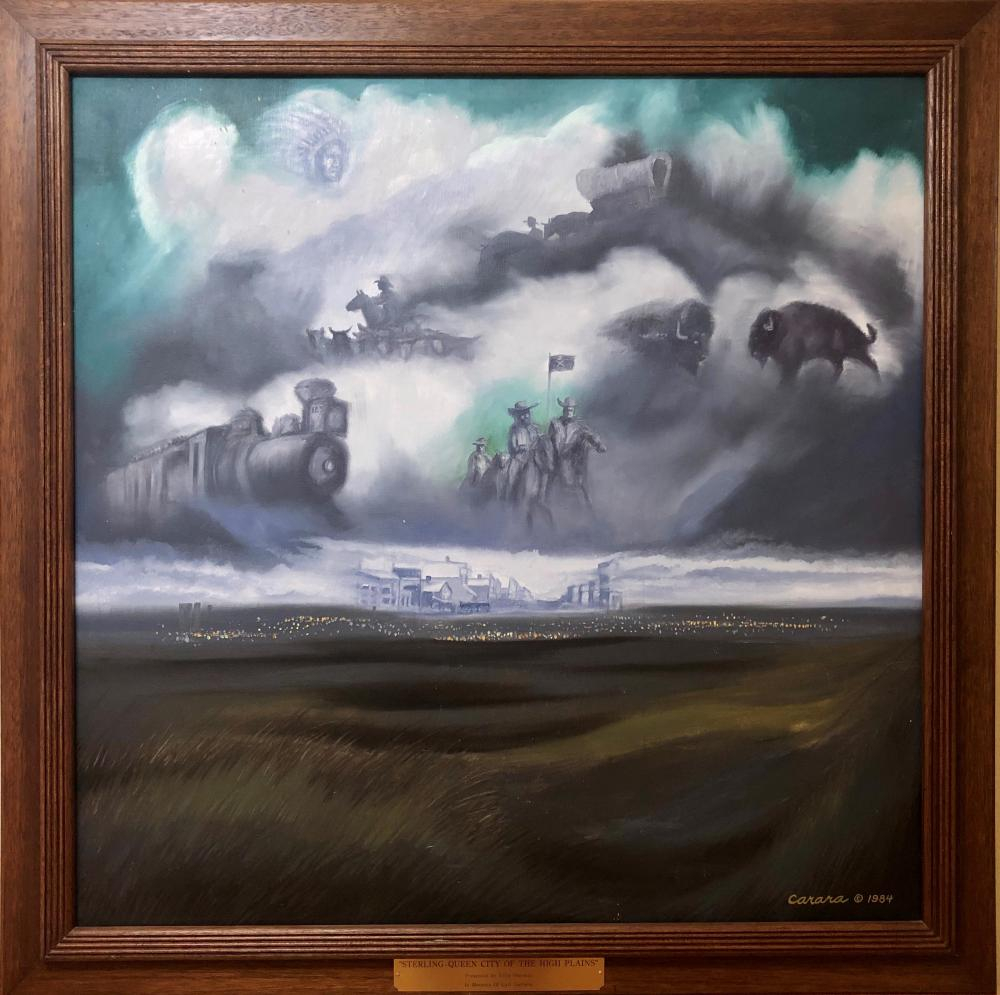Logan County Courthouse Art Gallery
Enjoy this series of virtual field trips, highlighting some of the gems of Sterling and Logan County. We are looking forward to your next visit when it is safe once again to get out and travel!

“Sterling – Queen City of the High Plains”
This painting represents not only the City of Sterling today, but reveals some hidden history in.... its development. The vastness of the high plains and the surprising height of some summer cloud formation gently cradles the city lights. Soon daylight will end and the cool evening breezes will usher in another quiet night on the plains.
By Artist Eugene Carara
Inside the historic Logan County Courthouse in downtown Sterling is the Eugene Carara art collection. These oil paintings were purchased by private citizens and then donated to Logan County to keep the collection together. The paintings are symbolic of historically important events or locations to the people of northeastern Colorado.
Sterling – Queen City of the High Plains 1873-1984
Sterling was remarkable from the beginning. Settled primarily by Southerners escaping the grim aftermath of the Civil War, it looked like a Southern town with its courthouse square and trees planted by the homesick newcomers.
The people were enterprising. When Greeley shunned them as “rebels,” they came down river to carve their own civilization from what Nathan Meeker, founder of Greeley, called “the finest body of wild land to be found anywhere in the world.”
They were practical. After several years, they moved their town three miles, close to where the railroad would run.
They were hardworking. Men, women, and children broke the sod and planted crops. Sometimes, a woman worked the farm while her husband walked miles to a budding town business.
They appreciated spiritual and aesthetic values. Churches sprang up all over town, at first in sod huts. Musicales and plays were produced in the “opera house” atop the courthouse. They painted, wrote, discussed.
Next came Midwesterners and then one ethnic group after another. Each put his customs and distinctive foods in the pot. Each brought people of special interests. The first generations may have dug their way through countless fields. The second dug and studied as well and often attended college.
By Logan County historian, Nell Brown Propst
